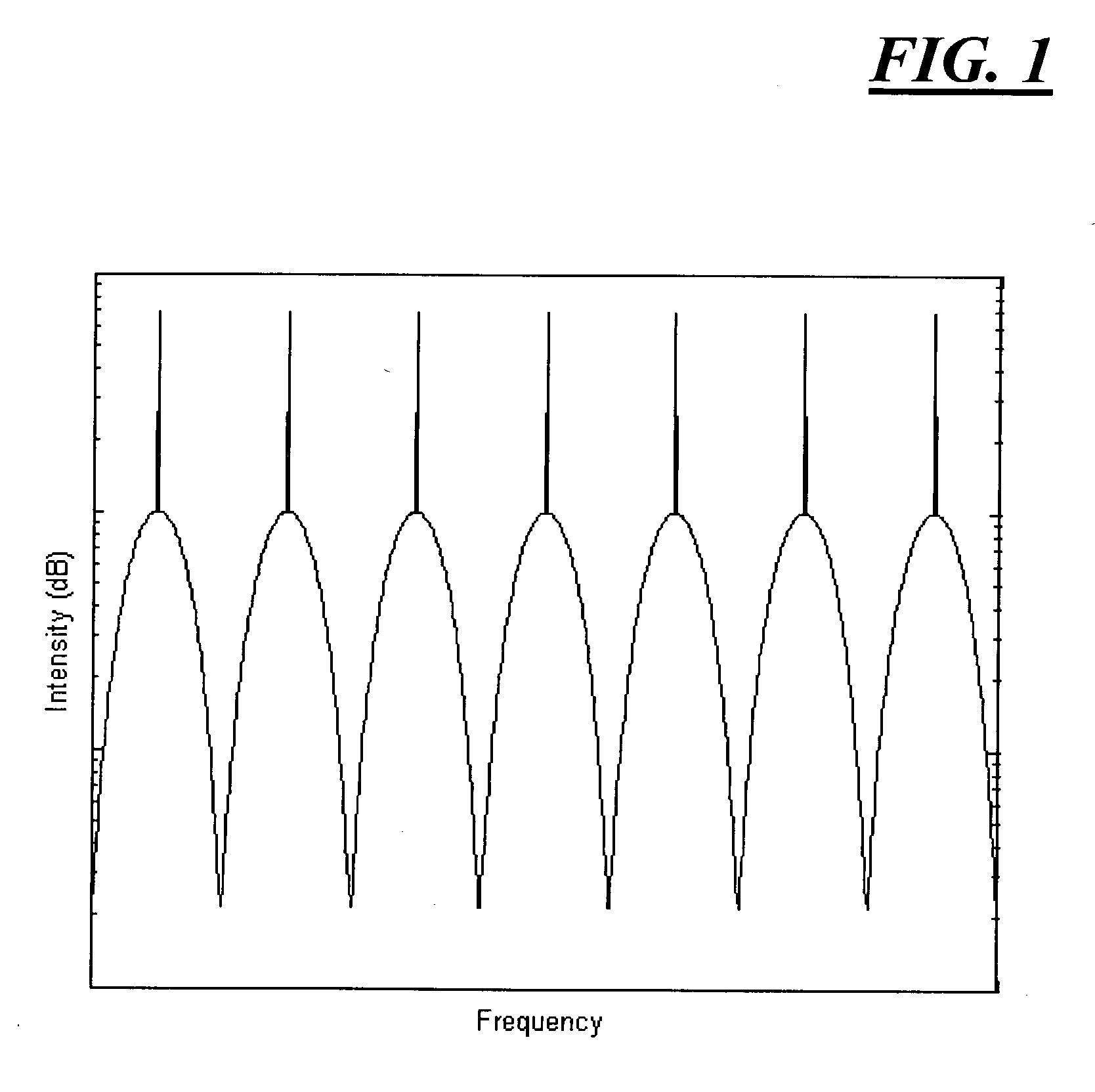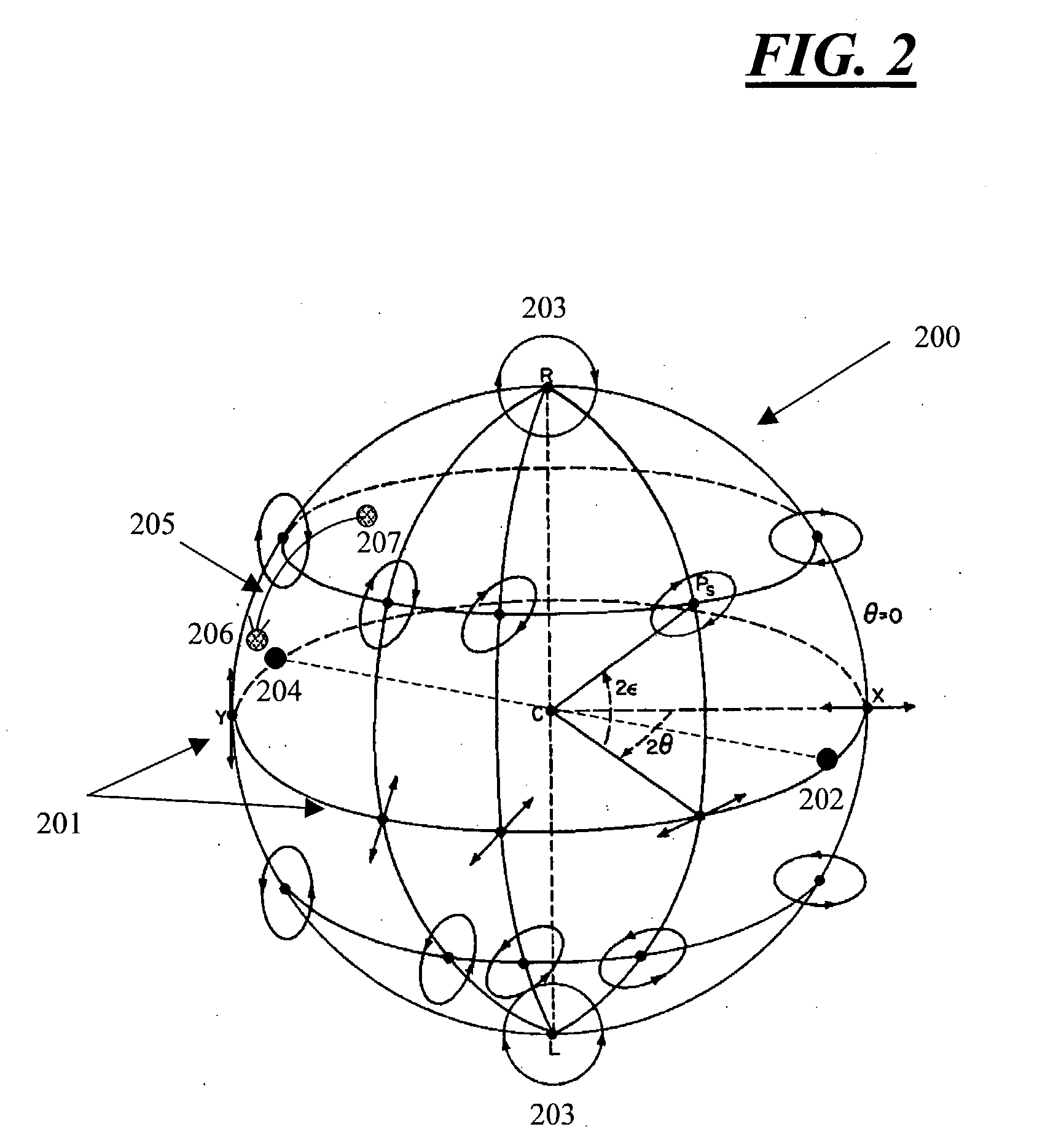Optical signal-to-noise monitor having increased coherence
- Summary
- Abstract
- Description
- Claims
- Application Information
AI Technical Summary
Benefits of technology
Problems solved by technology
Method used
Image
Examples
Embodiment Construction
[0061] One embodiment of the OSNR monitor of the current invention--shown in FIG. 3--uses a spectral polarimeter 300, a polarization controller 304, a polarizer 308, a spectral disperser 312, and a detector array 316, arranged in a serial configuration, with each component in optical communication with its neighboring components.
[0062] In operation, the spectral polarimeter 300 measures the polarization state of incident light across a wide spectral band with a spectral resolution narrower than the bandwidth of a single optical channel. After the measurement by the polarimeter 300, the combination of the polarization controller 304 and the polarizer 308 is used to extinguish the signal power component. The polarization controller 304 converts the incident polarization state 207 of each spectral bin measured by the spectral polarimeter 300 to a transformed polarization state 206 nominally orthogonal to the transmission axis of the polarizer 308. The polarizer 308 extinguishes the tra...
PUM
 Login to View More
Login to View More Abstract
Description
Claims
Application Information
 Login to View More
Login to View More - Generate Ideas
- Intellectual Property
- Life Sciences
- Materials
- Tech Scout
- Unparalleled Data Quality
- Higher Quality Content
- 60% Fewer Hallucinations
Browse by: Latest US Patents, China's latest patents, Technical Efficacy Thesaurus, Application Domain, Technology Topic, Popular Technical Reports.
© 2025 PatSnap. All rights reserved.Legal|Privacy policy|Modern Slavery Act Transparency Statement|Sitemap|About US| Contact US: help@patsnap.com



